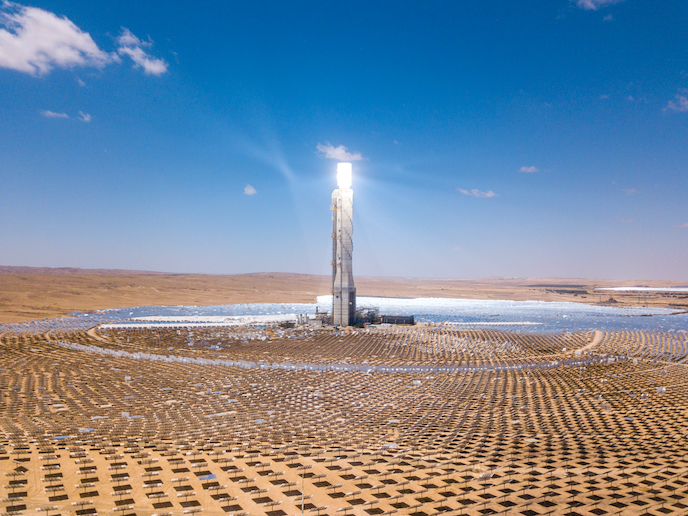Exploring tomorrow’s key components for ultra-hot heat storage
Energy storage is a hot topic, as the EU races to achieve the 2030 target of at least 27 % renewables in its final energy consumption. One form of renewable energy receiving greater focus is concentrated solar power (CSP), especially in the SET Plan Integrated Roadmap(opens in new window). CSP produces electricity by concentrating the sun’s rays to heat a medium, usually a liquid or gas. This is then used in a heat engine process (steam or gas turbine) to drive an electrical generator. “One cheap way to store this variable renewable energy source is to convert it into heat, store it and convert it into electricity upon demand,” notes Alejandro Datas, scientific coordinator of AMADEUS(opens in new window). This EU-funded research project assessed ultra-high temperature energy storage and conversion.
Supporting solar power
Most heat storage systems store energy in molten salts or different kinds of solid particles at maximum temperatures of ~ 560 °C. They also use heat engines to convert this heat back into electricity. Such technology is widely used in CSP plants(opens in new window), which in Europe are currently limited to Spain. It’s also found in more innovative electric thermal batteries or power-to-heat-to-power storage (PHPS) solutions for grid-integrated electricity storage applications. However, according to Datas, assistant professor of Electronics and Applied Physics at the Technical University of Madrid (UPM)(opens in new window), current heat storage systems are problematic. They need huge amounts of materials to store a significant amount of energy, i.e. about 1 cubic metre of molten salts to store 100 kWh. Moreover they are very complex due to the need to transfer and convert thermal energy into electricity: this involves the use of heat transfer fluids and moving parts (e.g. pumps, valves, a heat engine, etc.), resulting in serious maintenance issues.
Moving beyond silicon
Silicon could be used for energy storage, as it can store huge amounts of energy (about 1 200 kWh per cubic metre) when transiting from solid to liquid state at 1 414 °C. Known as ‘latent heat’, this is a ‘hidden’ form of energy, supplied or extracted only during the phase change. “Silicon has limitations, notably a 10 % expansion during solidification. So AMADEUS looked at new-generation materials and devices that allow for not only more energetically dense and safer heat storage, but also more efficient thermal-to-electric energy conversion. All this without using heat transfer fluids or moving parts,” says Datas. The project discovered that eutectic(opens in new window) iron-silicon boron alloy could be an ideal new phase change material (PCM). “The alloy has a high latent heat, boosting system energy density. It hardly expands when solidifying, so wouldn’t break a container. Plus it has a moderate melting point, under 1 200 °C,” adds Datas. “We also paved the way for a radically novel technology for thermal to electric energy conversion, through a working lab prototype of a new kind of hybrid thermionic photovoltaic device, known as TIPV,” he says. By producing electricity from electrons and photons, it converts high-temperature heat directly into very high-power rates. Datas concludes: “By 2022 we could have functioning industrial prototypes of this technology, for use in latent heat thermal energy storage (LHTES)(opens in new window), but they will need regulatory and financial support.”







